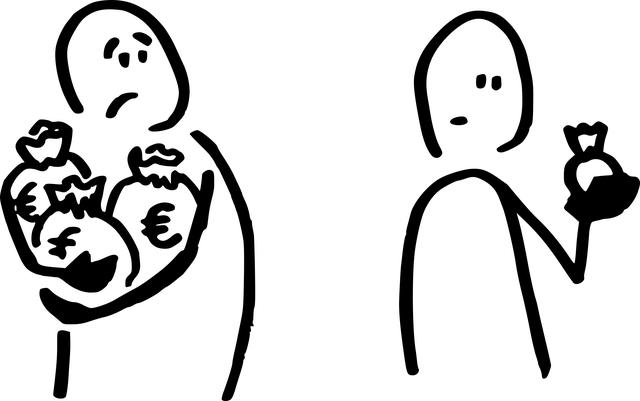Navigating the Shadows: Pakistan’s Struggle with Gender Inequality
In the heart of South Asia, where vibrant cultures intertwine with complex histories, lies Pakistan—a nation rich in diversity, yet fraught with the shadows of gender inequality. As dawn breaks over bustling cities and serene villages alike, the voices of women rise amid the echo of societal norms that often seek to silence them. This article embarks on a journey through the intricate tapestry of Pakistan’s battle against gender disparities, exploring the deeply embedded traditions, economic barriers, and the unwavering spirit of women who are challenging the status quo. From the marketplaces of Karachi to the lush fields of Punjab, we delve into personal stories, statistical realities, and the glimmers of hope that emerge as the country grapples with its past while striving towards a more equitable future. In examining this multifaceted struggle, we illuminate not just the obstacles, but also the resilience and determination that define the quest for gender equality in Pakistan.
Emerging from the Shadows: Understanding the Roots of Gender Inequality in Pakistan
The landscape of gender inequality in Pakistan is deeply intertwined with historical, cultural, and socio-economic factors. Traditional views often dictate the roles of men and women, relegating women to the background of society. Cultural practices, such as early marriages and limited educational opportunities, further entrench this divide. In many rural areas, societal norms reinforce gender stereotypes that impact women’s autonomy and access to resources. Despite progressive legislation aimed at improving women’s rights, these entrenched beliefs often overshadow legal advances, creating a gap between rights on paper and lived reality.
Furthermore, the economic arena presents another layer of complexity. Women comprise a significant portion of the agricultural workforce yet remain largely undocumented and underappreciated. The lack of access to financial resources and employment opportunities prevents them from achieving economic independence. Moreover, systemic challenges persist, such as inadequate transportation and safety concerns, which restrict mobility and participation in the workforce. The following table highlights key barriers faced by women in Pakistan, emphasizing the urgent need for targeted interventions to dismantle these obstacles:
| Barrier | Impact |
|---|---|
| Early Marriage | Limits education and career opportunities. |
| Lack of Education | Enforces economic dependency. |
| Gender-based Violence | Creates fear and restricts mobility. |
| Limited Legal Awareness | Prevents access to rights and resources. |

Voices Unheard: The Impact of Cultural Norms on Women’s Rights and Opportunities
Cultural norms in Pakistan often act as formidable barriers, deeply entrenched in the fabric of society, influencing women’s rights and shaping their opportunities. From an early age, many girls are socialized into roles that prioritize familial responsibilities over personal ambitions, perpetuating a cycle of dependency. Marriage and motherhood are frequently emphasized as the ultimate achievements, while education and career pursuits are relegated to secondary status. Consequently, women face societal pressure that discourages them from seeking higher education or employment, leading to staggering rates of illiteracy and economic inactivity among females. The ramifications are evident in various sectors, as women remain underrepresented in leadership roles and decision-making positions, stifling not only their personal growth but also the nation’s potential for inclusive progress.
Furthermore, these cultural expectations manifest in legal and institutional frameworks that remain resistant to change. While Pakistan boasts constitutional guarantees for women’s equality, the enforcement of these rights is often undermined by local customs and traditions. For instance, practices such as honor killings or domestic violence persist, perpetuated by a societal code that prioritizes family honor over the woman’s autonomy. The following table outlines some key statistics related to gender inequality in Pakistan:
| Aspect | Statistics |
|---|---|
| Female Literacy Rate | 47% |
| Women in Workforce | 22% |
| Representation in Parliament | 20% |
| Prevalence of Domestic Violence | 34% |
These figures paint a stark picture of the challenges faced by women in their pursuit of equality and empowerment. The intersection of cultural norms and systemic limitations presents a daunting landscape that many women must navigate daily. Despite these obstacles, grassroots movements and women’s advocacy groups are beginning to challenge the status quo, carving out spaces for dialogue and reform. Through increased awareness and a commitment to change, there is hope for a future where women’s voices can rise above the silence imposed by centuries-old traditions.

Bridging the Divide: Education and Economic Empowerment as Catalysts for Change
The gap between education and economic opportunities in Pakistan presents a significant hurdle in addressing gender inequality. Investing in education for girls not only shifts societal norms but also amplifies the potential for women to engage productively in the workforce. When girls receive quality education, they are more likely to secure jobs, obtain financial independence, and contribute to their families and communities. In turn, this helps to dispel the age-old notion that women are less capable or deserving of economic participation. Furthermore, community engagement plays a crucial role in transforming perceptions and encouraging families to prioritize education for their daughters.
The intersection of educational initiatives and economic empowerment creates a powerful momentum for change. By focusing on practical skills development, vocational training, and entrepreneurship programs tailored for women, the sector can ensure that educated women have a pathway to economic self-sufficiency. Initiatives such as microfinance opportunities allow women to invest in small businesses, paving the way for financial independence and fostering greater societal respect. As more women break free from traditional limitations, we can expect a ripple effect that enriches entire communities and lays the groundwork for a more equitable society.
| Education Benefits | Economic Opportunities |
|---|---|
| Enhances Literacy Rates | Increases Workforce Participation |
| Promotes Critical Thinking | Boosts Household Income |
| Fosters Leadership Skills | Encourages Entrepreneurship |

Towards a Just Society: Policy Recommendations for Upholding Gender Equality in Pakistan
To foster a future where gender equality is not just an ideal but a lived reality in Pakistan, it is essential to implement a robust framework of policy recommendations aimed at dismantling systemic barriers. Legislative reforms must focus on enacting comprehensive laws that protect women’s rights in all spheres—be it education, employment, or personal safety. Furthermore, strengthening enforcement mechanisms to ensure that existing laws are not merely words on paper but active safeguards for women’s rights is crucial. Additionally, initiatives should prioritize public awareness campaigns that challenge societal norms and address cultural biases that perpetuate gender inequality.
Investment in educational programs is crucial for shifting mindsets and cultivating a culture of respect and equity. Targeted scholarships for girls in underserved areas can encourage female participation in education and technology sectors, fostering economic independence. Moreover, strategic partnerships with non-governmental organizations can facilitate community-driven projects. These collaborations should focus on empowering women through skill development workshops and entrepreneurship training, equipping them with the tools needed to thrive. A commitment to comprehensive data collection on gender disparities will also be vital in shaping informed policies and tracking progress.
The Conclusion
As we conclude our exploration of Pakistan’s intricate dance with gender inequality, it becomes evident that the shadows cast by societal norms and historical narratives are deep and complex. Yet, within these shadows, threads of resilience and hope emerge, woven together by the voices of women and men who dare to challenge the status quo. The struggle for gender equality is not just a battle for women’s rights; it is a fight for the very fabric of a fairer society, where every individual, regardless of gender, can contribute to and benefit from collective progress.
In navigating these shadows, we recognize that change is a gradual process, often illuminated by small victories that pave the way for larger transformations. The resilience found in the hearts of activists, the determination of policymakers, and the solidarity of communities underscores that progress is not only possible but essential. As we continue to untangle the complexities of gender inequality in Pakistan, let us carry forward the stories of those who illuminate the path toward equity, encouraging us all to envision a future where everyone has the opportunity to thrive in the light. The journey may be long, but each step taken in solidarity brings us closer to a more just and inclusive world.



